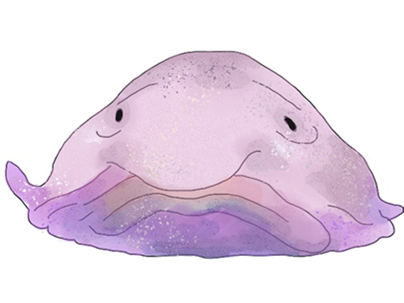
Conservation biology has a problem.
A big problem.
A beautiful problem.
A majestic problem.
A charming, fearsome, cute-as-a-button problem.
The problem, folks, is one of charisma – and you either got it or you ain’t.
It is undeniable that some species exert a magical sway over the collective human psyche, holding some indefinable quality that draws and holds us. Charisma is hard to nail down. There’s no set list of features that will garner public approval, only a gut-deep sense of attraction – a little like falling in love.
There’s nothing inherently wrong with gravitating towards certain creatures more than others – where’s the harm in loving pandas? The issue only comes to the fore when we introduce the looming spectre of global ecosystem destruction and decay. In the face of the worsening biodiversity crisis, which may indeed signal the onset of Earth’s sixth mass extinction event, our bias towards protecting a relatively tiny subset of species is leaving some of our most vulnerable creatures out in the cold. The harsh reality of conservation in the modern age is that funds are limited, needs are many, and we are forced to be selective about who we choose to protect. The most charismatic species receive vastly more research attention, and attract an unbelievably hefty portion of conservation funding. Consider this – endangered marine invertebrates are represented in a full 1000 times fewer research papers than marine turtles. I love turtles as much as anyone, but this figure makes me uncomfortable.
The overwhelming majority of marine creatures simply don’t fit most people’s criteria for charm, and yet they are in need of just as much protection as any other species on Earth. So what can we do to make the public care about the far less glamourous denizens of the deep, in the same way that we ask them to care about pandas, whales and tigers?
Perhaps we need to work harder at uncovering the inherent charm that each and every species on earth possesses – we need to learn to look with new eyes. Here’s my take on some of the ocean’s ugliest species in need of conservation, and why they’re actually utterly charming.
Gulper eel – this non-descript little eel has a wonderfully bizarre party trick – with special hinging jaws, it can open its mouth unbelievably wide and inflate its gullet to look impressive.

And the gulper eel isn’t the only one to have mastered this ballooning act. The black swallower can likewise open its jaws to ridiculous size. It’s believed that this allows these species to take advantage of the rare opportunity afforded by a large meal in the depths, where food is often limited to drifting specks of debris.

Unfortunately they can sometimes bite off more than they can chew – if their meal is too large it begins to rot in their bellies before it can be digested, and the resulting gas buoys them to the surface where they die. Poignant.
Blobfish – the most recognizable ugly face in the ocean, this poor creature has repeatedly been voted the most hideous in all the world. This poor guy usually dwells in the abyss, at depths of up to 1100m. The difference in pressure between these depths and the surface is so great that the tissues of this fish begin to disintegrate as we haul him in, and his surface-self is a ruined, gelatinous mush that barely resembles his fine deep-sea form. Seems an unfair position to judge from! Threatened directly by deep-sea trawling, we need to learn to love this smooshy face sooner rather than later.

Goblin shark – what a creature! With a huge, protruding proboscis and extendable, needle-toothed jaws, this shark seems like it would draw considerable attention. Perhaps it would, if only we could find it! Fewer than ten have been observed in the last fifty years.

Spotted handfish – these adorable wee fish are true oddities. They lack a swimbladder, and so have no way of controlling their position in the water column – a real danger for a free-swimming species. Instead, they stick the bottom sediments, where they walk about on their modified fins, which look remarkably like tiny little hands. This means they can’t travel very far, and has left them incredibly vulnerable to environmental threats. They were once so widespread throughout Tasmania’s Derwent estuary that they were the preferred species for lab dissections at the local university; now, they are critically endangered and limited to a tiny handful of localized patches.

Jamie Priest - Author & Illustrator